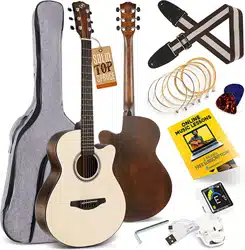Loading ...
Loading ...
Loading ...

www.PyleUSA.com
4
Changing Strings
A fresh new set of strings can breathe renewed life into your instrument. That is why many “tone-conscious” touring
professionals change their strings before every performance. While there is no set rule on how often to change strings,
we have found that most players do not change them nearly as often as they should.
Body oils, acids and salts from sweaty hands and humidity all interact with the metals in guitar strings and cause a
corrosion and breakdown of the materials. Don’t wait until your strings break and fall o from old age before you change
them. Worn, oxidized, pitted and dirty strings will not hold pitch, and simply sound bad. If you are an average player,
playing several times a week, we suggest that you change the strings at least once a month.
When changing strings, we recommend that you remove and replace each string one at a time, instead of all at once.
This will prevent sudden and potentially damaging changes in neck tension. Each new string should be tuned up to
correct pitch before the next one is removed. When tuning a brand new string, always bring it up to pitch slowly.
Otherwise, the rapid stretching may cause the string to break.
illustration 4
Re-Stringing Your Guitar
The procedure for re-stringing at-top acoustic guitars and
basses is quite similar in the way that the strings are wound
onto the tuning machines.
There are dierences though, in how the strings are attached
to the bridges of acoustic at-top and classical guitars.
Please Note: When changing strings, change them one at a
time. Do not remove all of the strings at the same time, as
doing so will release all of the tension at once from the neck
and body, which may potentially cause distortion and
damage to the instrument.
Loading ...
Loading ...
Loading ...
